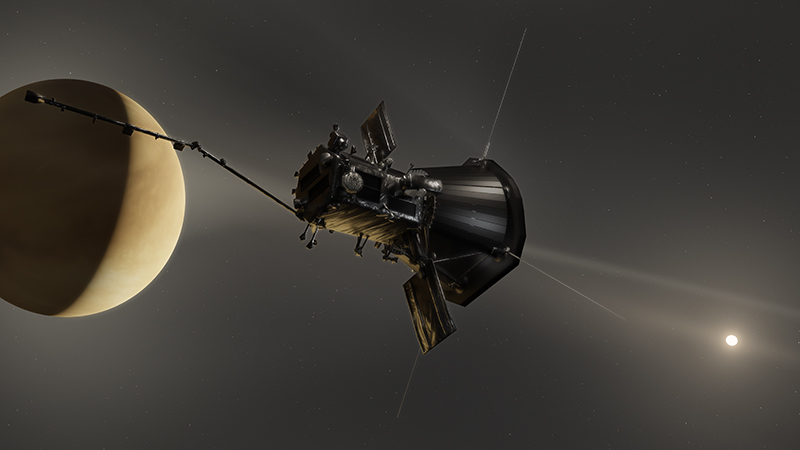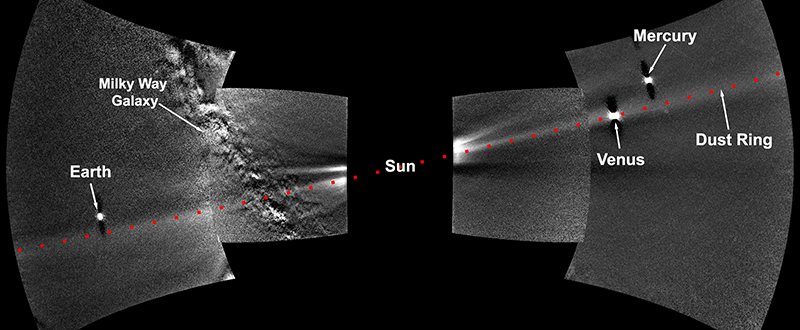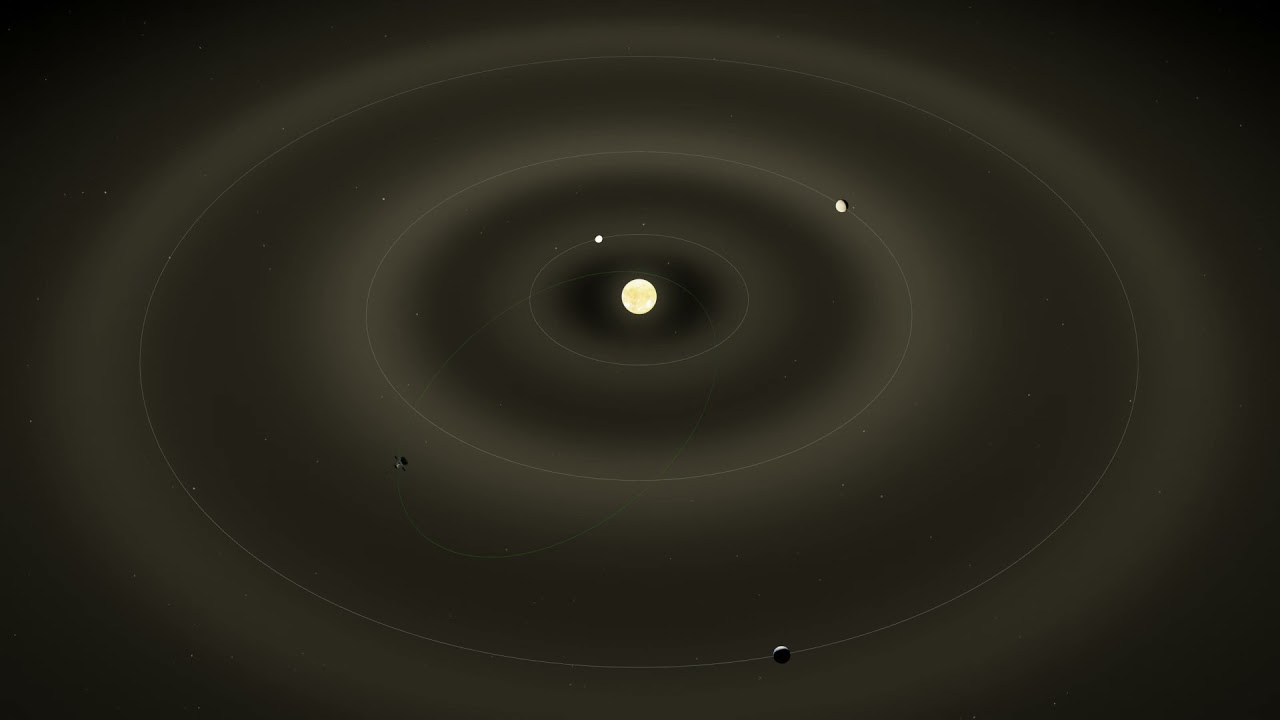News
Parker Solar Probe Captures First Complete View of Venus Orbital Dust Ring
NASA’s Parker Solar Probe captured the first complete view of Venus’ dust ring, a band of particles that stretches for the entirety of the planet’s path around the Sun. The new images, published April 6 in The Astrophysical Journal, cover nearly the entire 360-degree view of the ring, completing a picture that scientists had seen only hints of before, with images from the Helios probes in the 1970s and multiple observations from NASA’s twin Solar Terrestrial Relations Observatory (STEREO) probes from 2007 to 2014.
“This is the first time that a circumsolar dust ring in the inner solar system could be revealed in its full glory in ‘white light’ images,” said study lead author Guillermo Stenborg from the U.S. Naval Research Laboratory in Washington, D.C. “I find that pretty special.”
While Parker Solar Probe’s chief objective is to study the Sun’s corona and solar wind, the team planned from the mission’s outset to try and capture images of Venus’ dust ring using the spacecraft’s Wide-field Imager for Parker Solar Probe, or WISPR, instrument.
With two telescopes that together provide a field of view of more than 95 degrees, WISPR was built to capture wide-angle images of the solar wind in white light. Initially, the dust ring was revealed using images from the spacecraft’s third orbit around the Sun in August and September 2019, when it performed a series of rolling maneuvers to help manage its momentum. Those rolls incidentally made seeing the ring possible because it allowed for customized image processing to reveal faint, stationary features.
“That process didn’t erase the dust ring from the images,” as seems to have happened with images from the first two orbits, when the spacecraft didn’t perform those rolling maneuvers, explained Parker Solar Probe Project Scientist Nour Raouafi from the Johns Hopkins Applied Physics Laboratory in Laurel, Maryland. With that realization, the team went back and reprocessed the earlier images, and there, indeed, was the ring.
“It’s funny that spacecraft operations can sometimes lead to the discovery of new things,” Raouafi remarked, smiling. “It’s kind of amazing.”


